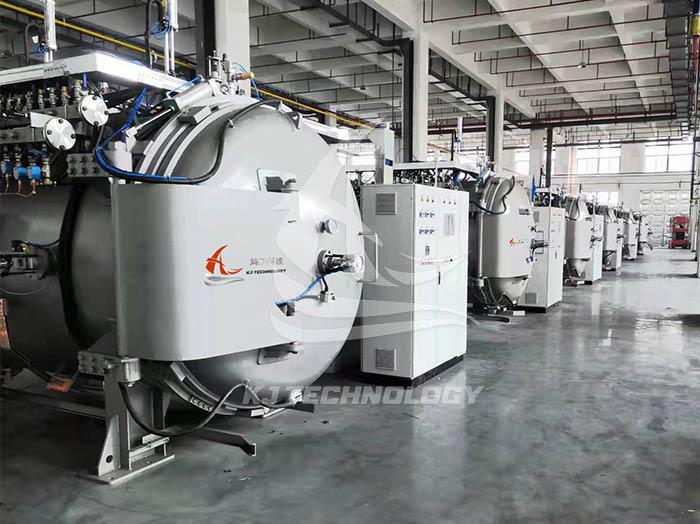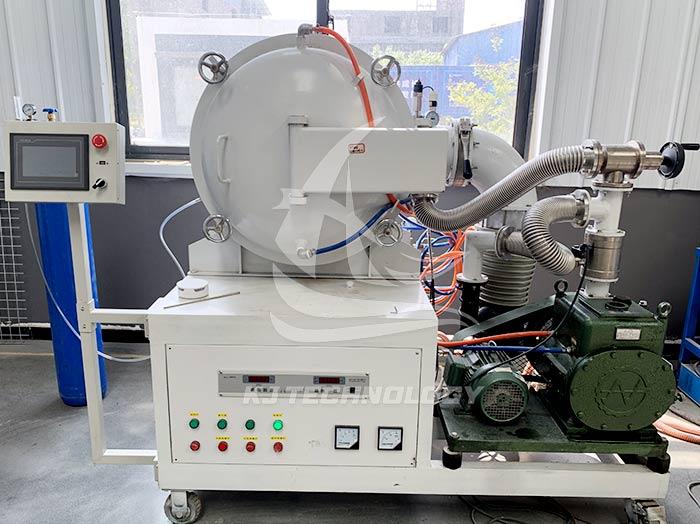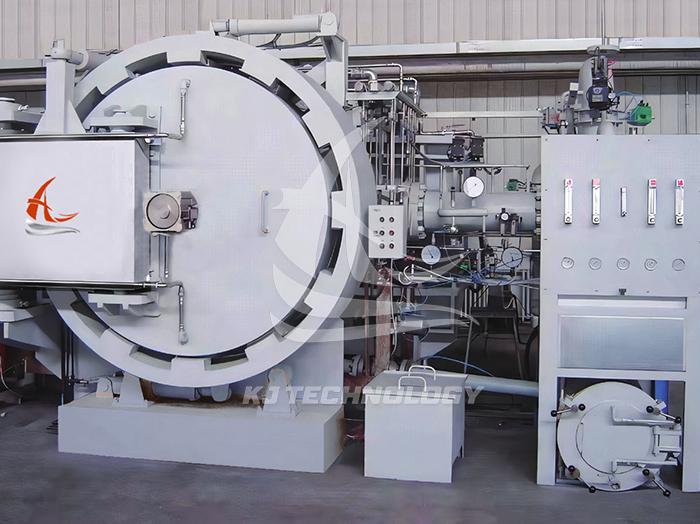Precautions for maintenance of high vacuum heat treatment brazing electric furnace
 10-15-2025 Author: KJ technology
10-15-2025 Author: KJ technology
The maintenance of high vacuum heat treatment brazing electric furnaces should focus on equipment cleaning, vacuum system maintenance, heating system inspection, implementation of safety measures, and environmental monitoring. The following are specific precautions:
1. Equipment cleaning and pretreatment
Furnace cleaning: After each use, use a brush, broom, or compressed air to clean the furnace to prevent impurities such as oxide scale from falling onto the electric heating element and causing a short circuit. After long-term use, the oxide scale of heat-resistant steel components such as the bottom plate, molybdenum heating rod, and furnace insulation layer should be carefully removed, and knocking is strictly prohibited.
Surface wiping: The outer surface of the furnace and control cabinet should be regularly wiped to maintain cleanliness and hygiene. When cleaning, cut off the power and compressed air, use a silk cloth soaked in acetone or anhydrous alcohol to wipe the furnace dirt or dust, and wipe it dry.
Magnesium block cleaning: Regularly clean the magnesium blocks on the inner wall of the furnace door once a month to prevent the accumulation of magnesium blocks from affecting the vacuum degree.
2. Vacuum system maintenance
Vacuum degree inspection: Regularly check the vacuum degree to ensure that the pressure rise rate is ≤ 0.2Pa/h. If the vacuum degree does not meet the standard, a helium mass spectrometer leak detector should be used for vacuum helium gas leak detection to promptly solve the leak points.
Vacuum pump maintenance: Mechanical pumps and Roots pumps should have regular oil changes and refills, and the oil cup of Roots pumps should be kept with oil. When changing the oil, the waste oil should be drained clean, and when changing the diffusion pump oil, the internal oxide layer should be disposed of before replacing with new oil.
Valves and seals: Regularly check whether the valve switches and seals are normal, and replace aging sealing gaskets in a timely manner.
3. Heating system inspection
Heating element: Regularly inspect the heating element for ignition, volatilization, cracking, detachment, and other phenomena, and replace damaged heating elements in a timely manner. Note that the temperature of the vacuum electric heating element itself is generally 100 ℃ higher than the temperature of the surrounding medium or the temperature being heated, to avoid overloading.
Temperature uniformity: Raise the temperature to 600 ° -800 ° C (700-1200 ° C for high-temperature brazing) in an empty furnace state, and test the temperature uniformity after insulation to ensure that the temperature uniformity at 9 points within the effective hot zone size is ≤± 3 ° C (≤± 5 ° C for high-temperature brazing).
Insulation resistance: Before each furnace start-up, the insulation resistance should be checked to ensure that there is no poor contact between the electrodes and no short circuit between the electrodes and the furnace body. When the heating element ages and the resistance value increases or is damaged due to long-term use and pollution, it should be replaced in a timely manner.
4. Implementation of safety measures
Cooling water system: The water pressure of the cooling water should be maintained between 0.1 and 0.2 Mpa, and the outlet temperature should be ≤ 45 ℃. Before each shift, it is necessary to check whether the circulating water tank is sufficient and whether the cooling water pressure is greater than 0.1Mpa. Otherwise, the waterway filter should be checked. When not in use for a long time, the circulating water inside the water cooling jacket of the equipment should be drained to prevent freezing and cracking in winter.
Compressed air system: The compressed air pressure should be between 0.4 and 0.5 MPa. Before each shift, it is necessary to check whether the compressed air pressure meets the standard, otherwise the pipeline should be checked for leaks.
Electrical safety: The electrical connectors of the electrical control system should be kept clean and tightened, and each tightened electrical connector should be checked before tightening. Regularly check the insulation resistance of the furnace, which should not be less than 100 Ω.
Emergency handling: If there is a malfunction or abnormal situation with the equipment, it should be stopped immediately to investigate the cause and promptly repaired and maintained.
5. Environmental monitoring and recording
Environmental parameters: Monitor the temperature, humidity, gas composition, and other parameters of the environment to ensure the stability of the brazing furnace usage environment.
Maintenance records: Regularly maintain records and checklists, recording the time and details of maintenance and upkeep, in order to track and solve possible problems in a timely manner.








